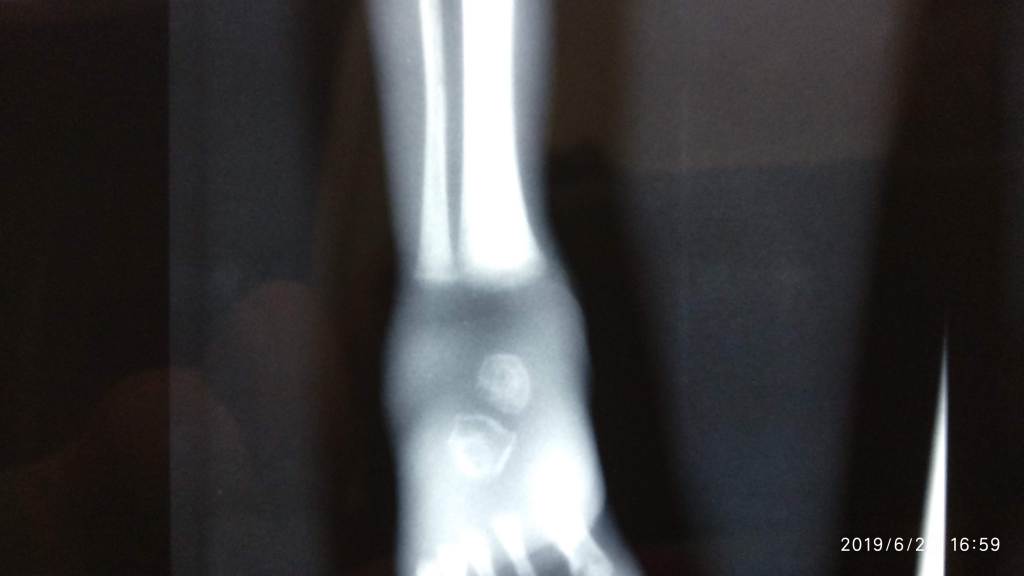Children’s bones and joints are especially prone for damage due to infections from bacteria. One of the reasons of infection is that these children have poor immunity. The peculiar blood vessel structure these young bones also have a role to play in this. The bacteria that circulate inside blood vessels are usually blocked and destroyed by our immune system. Some of the bacteria which escape the Immune cells can get lodged inside the bone when it gets there via blood stream.
In a young child the blood vessel that travels through the area of the bone which causes growth is like a hairpin with acute bends. The bacteria are prone to get trapped when it goes around the bend. When they get trapped they multiply and cause infection. When this happens inside the bone it is medically called Osteomyelitis . If the bacteria happens to infect the joint itself and there is pus collection inside the joint space then it is medically called Septic Arthritis.

Osteomyelitis and Septic Arthritis are both very dangerous conditions to the young, maturing cartilage, bone and joint. The Bacteria can produces toxins and our body also produces chemicals of inflammation against them both of which cause damage to the tissues around. Cartilage, Growth Plate, Bone, Joint are some of the tissues that the Bacterial infection can damage permanently. This damage can occur very early on (within few hours) of onset of the infection. Therefore it is extremely urgent to take them seriously and take the child to the nearest medical facility for immediate care.
Long term consequences of Infection of Bone and Joint in Children
The growing area of childs bone is near the joint. These cells which grow and give length to the bone are arranged in layer called Growth Plate. This is very near the joint. The hairpin blood vessels are also very near this. Many times when Bacteria attack bone, it will be very near this Growth Plate and Joint . This results in infection damaging both the joint cartilage and the growth plate near it.
When Joint Cartilage is damaged, the smooth covering over the bone is gone. This results in scars inside the joint, stiffness of joint, dislocation of joint or if the infection is very severe complete absorption of bone which form the joint.
When the growth plate is damaged, the growing cells are premanently damaged and depending on how bad the growth plate damage is it may cause either short limb or deformity in the limb.
It is this combination of damage to the Joint, Cartilage, Ligaments and Growth Plate that necessitates emergency action in new borns and young children when there is bone or joint infection.

What are the symptoms of a newborn with Bone and Joint infection ?
The Main symptoms of Septic Arthritis and Osteomyelitis are :
- Swelling of a limb
- Redness
- Child not moving the limb
- Severe pain on attempting to move the limb
- High Fever – Some children may not show high fever but instead will have low persistent fever that runs for days or weeks
- Pus discharge from a wound



What is the treatment of Septic Arthritis and Osteomyelitis ?
Treatment of bone and joint infection in Children is an emergency. Newborn or Children who have any of the above mentioned symptoms should be immediately brought to a medical facility for check up. Many times children may not exhibit many of the symptoms mentioned because their immune system would be very weak. Many children cannot even mount a defence against the attacking Bacteria to kill them. Such children with poor immunity like premature new-born children, children with other medical diseases may not show much all the symptoms mentioned above. So it is very important for the parent to keep a close watch on the child and report if there is even a slight suspicion of such symptoms.
Immediate steps have to be taken to treat the child. If the child has been diagnosed with pus collection inside the bone / joint, the first step is surgical removal of the pus and cleaning the bone or joint of the pus which has collected there. Once the pus has been cleaned the child is treated with Antibiotic injections to allow the body kill the Bacteria which has invaded it. This has to be done as an emergency.
The more treatment is delayed, the more the destruction of the Bone, Growth plate, Cartilage, Ligaments would be leading to long term problems like Short limb, Limb deformity, Joint dislocation etc.


Message to Parents
It is important parents recognise Bone and Joint infections in children early and bring it to the attention of the doctor as early as possible. Any delay in treatment is means much more time for bacteria to cause destruction which can result in long term problems for the child.
